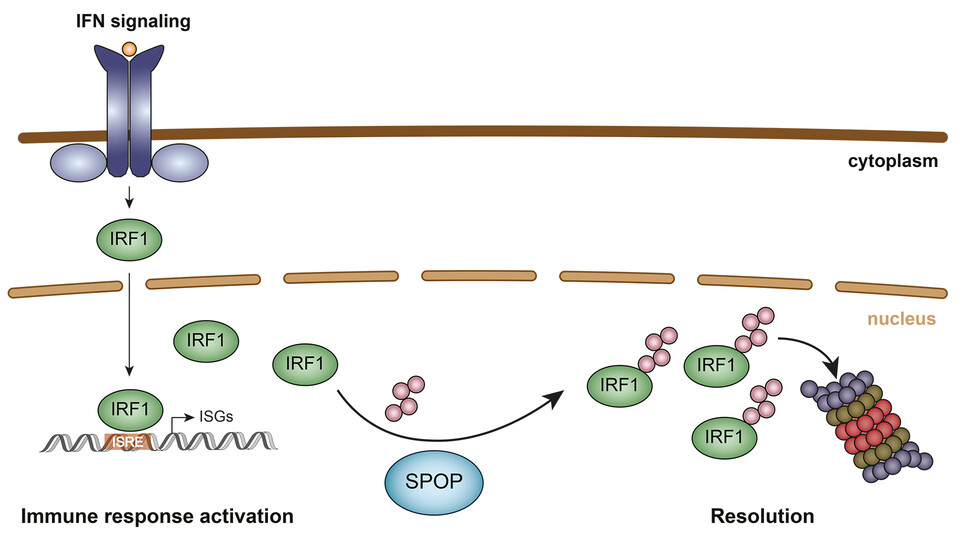September 11, 2023
SPOP targets the immune transcription factor IRF1 for proteasomal degradation
Our innate immune system provides the first line of defense against invading pathogens. However, hyperactivation of these defenses can lead to inflammatory syndromes such as arthritis. Controlling the transcriptional programs that drive the innate immune response is therefore critical. In work recently published in eLife, the Versteeg lab at the Max Perutz Labs has identified a factor essential for the degradation of the transcription factor IRF1, a key driver of the innate immune response. The work establishes a cellular mechanism by which cells maintain IRF1 levels in a so-called ‘Goldilocks zone’, thereby guarding against IRF1-driven inflammation.
Cell survival depends acutely on robust responses to environmental insults, including invading pathogens such as bacteria and viruses. Signaling pathways that sense the presence of the pathogen upregulate key transcription factors that subsequently drive the expression of response genes. These response genes include secreted proteins called interferons that instruct neighboring cells to mount an immune response to counter the threat. Interferon Regulatory Factor 1 (IRF1) is key to this response, but too much of it triggers hyperactivation of the pathway and is associated with a range of inflammatory diseases. IRF1 levels are controlled both transcriptionally and at the protein level, but precisely how IRF1 is targeted for degradation is not clear.
Using a genome-wide CRISPR knockout screen, the Versteeg lab sought to identify regulators of IRF1 abundance in an unbiased manner.
Read the full story in the News from the Max Perutz Labs.
Publication:
SPOP targets the immune transcription factor IRF1 for proteasomal degradation
eLife. 2023, August 25.

© Schwartz I et al. / Max Perutz Labs